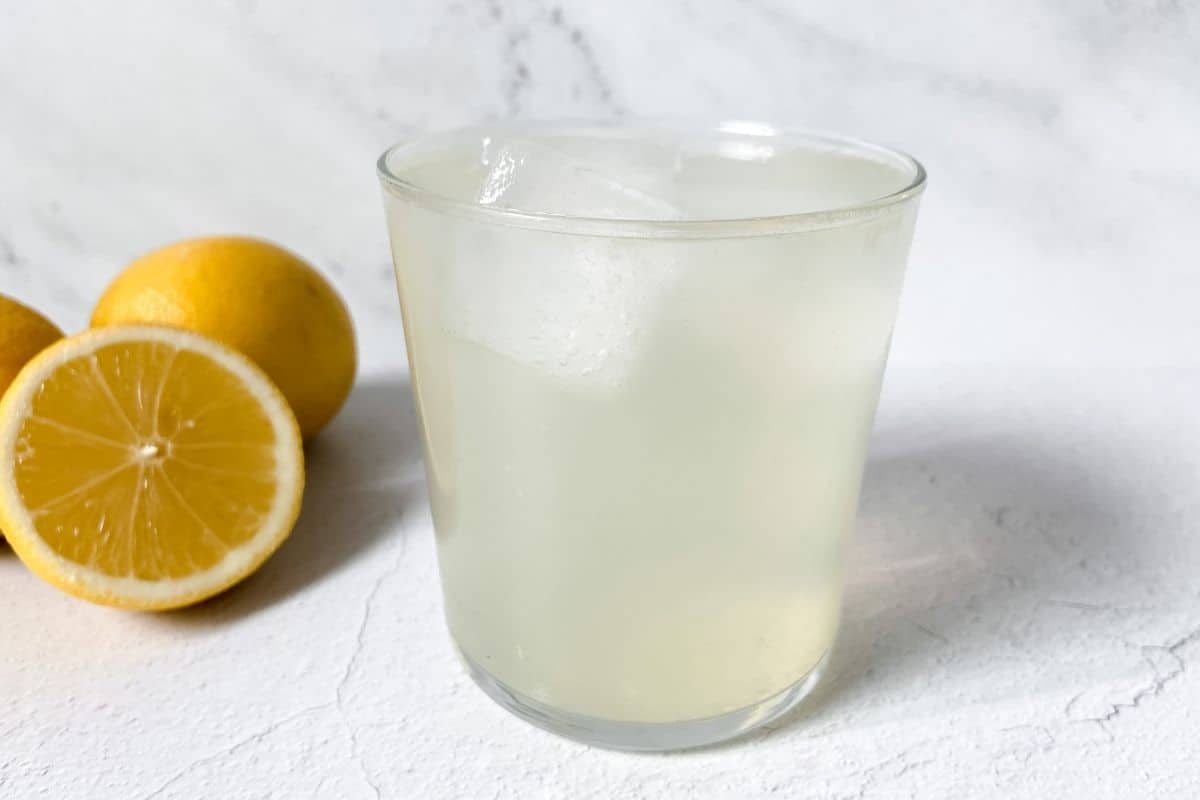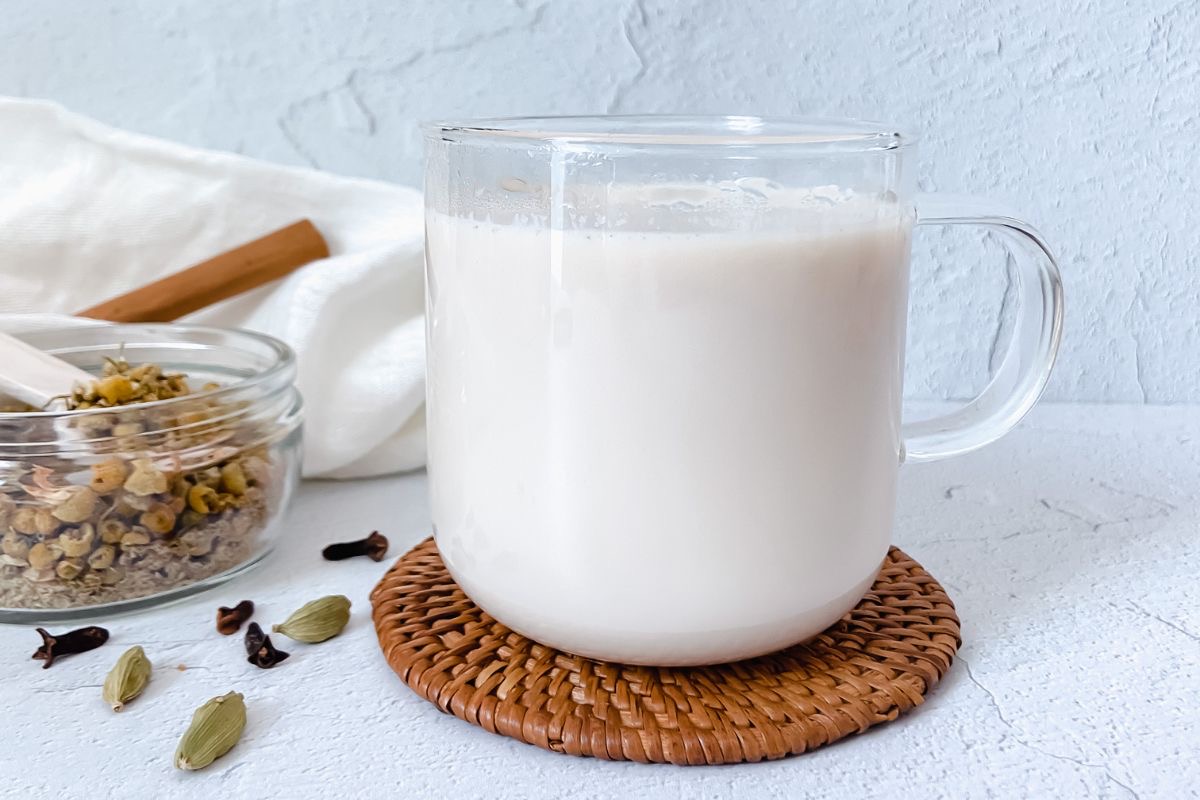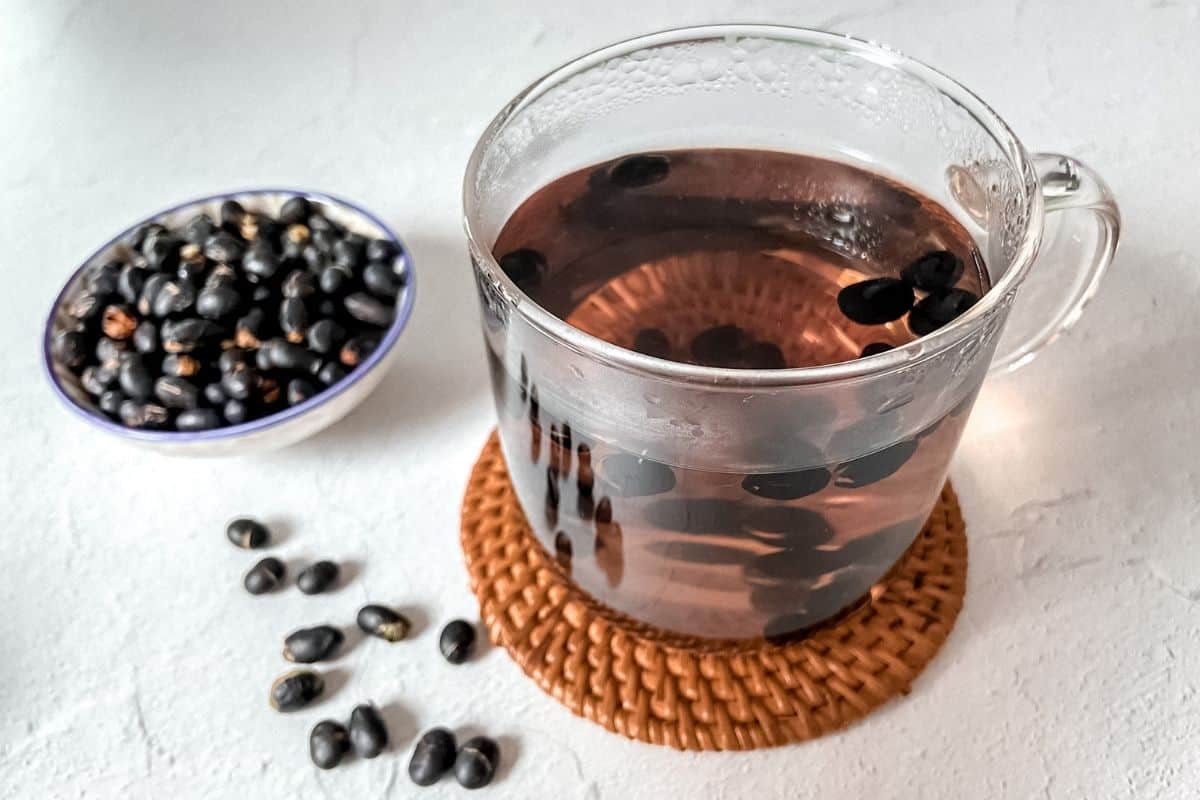How to make Sesame Milk (with White, Brown or Black Sesame Seeds)
Plant-based milk made with sesame seeds: a less known but delicious milk alternative

Almond milk, oat milk and soymilk are some milk alternatives everyone has heard about, but did you know that you can also make vegan milk from sesame seeds?
In this post I’ll show you how to make sesame milk and how different types of sesame seeds compare.
If you are looking for a different milk alternative, sesame seeds milk might be worth a try!
This post may contain affiliate links. This means, if you make a purchase through one of these links, I may earn an affiliate commission at no extra cost to you. Here you can read my affiliate disclosure.
Reasons to milk from sesame seeds
What you’ll need
The basis for sesame milk only needs 2 ingredients: sesame seeds and water.
Then, you’ll also need a blender and a nut milk bag or cheesecloth.
Is there a best type of sesame to make sesame milk?
You can use any type of sesame seeds to make milk, wether they are white, golden/brown or black.
The taste and color of the resulting milk will be different, but all taste good and the steps to make milk are the same.
In case you want to know more about how your sesame milk will turn out with the sesame seeds you have, keep reading to see the results I got (and also, some tips to consider depending on the type of sesame you use):
Types of sesame seeds

Sesame seeds are the seeds of the Sesamum indicum plant and there are 3 types of them: brown (or gold), black and red.
There is a forth category, commonly called “white”, but they are just gold or brown sesame seeds that have their outer shell removed.
Since this outer shell is the hull, these seeds are called “hulled sesame seeds”.
I’ve tried making milk with:
- gold/brown sesame seeds, both hulled (with removed shell, so they are very pale and soft) and unhulled
- black sesame seeds
I can’t speak about red sesame seeds because I haven’t tried them.
Sesame milk from hulled sesame (white seeds) vs. unhulled sesame (golden-brown)

While both give the similar amount of milk, milk from hulled sesame seeds (pale white seeds) tastes more mellow and has a more intense sesame aroma.
On the other side, sesame milk from unhulled sesame seeds (light brown seeds) has some bitterness and less aroma.
I’ve only tried a brand of unhulled sesame seeds (not roasted) and I can imagine, the taste of the milk will depend on the brand of seeds.
But at least with the unhulled sesame seeds I’ve tried, the taste of the milk has a noticeable bitterness that might be off-putting for some.
For example, my husband, who doesn’t sweeten milk, don’t enjoy the sesame milk I make from golden seeds.
My kids enjoy the sesame milk though, as long as I blend in some banana, dates with cacao powder.
Summing it up:
I personally enjoy sesame milk from hulled (white) sesame seeds more because it tastes mellow and less bitter.
The downside is, hulled sesame seeds are usually more expensive and difficult to find.
Sesame milk from white sesame seeds vs. black sesame seeds

Black sesame has a different aroma and taste as light colored sesame (both hulled and unhulled).
I personally love black sesame because it reminds me of my childhood, when I had toast spread with black sesame paste at my grandma’s (sweet black sesame paste is quite popular in Japan).
And while black sesame isn’t as commonly used in the West, most people I know who have tried it enjoy it, even if they don’t like golden sesame seeds.
Anyway, black sesame milk has the distinctive aroma of black sesame and a mellow, very agreeable taste.
I might be partial to black sesame milk, but my kids also seem to like it better than white sesame milk: they wouldn’t drink white sesame milk unless it’s in a smoothie, but they enjoy black sesame milk just with some honey added.
Milk from black sesame seeds also has a cool color: gray.
Just be mindful that the pulp will color your nut milk bag!
Luckily, the grey stains will likely disappear if you wash it as soon as you are done.
To sum it up:
I like black sesame milk more than white sesame milk, but this might be a personal preference.
Making sesame milk: step-by-step tutorial
How to make sesame seeds milk
- Pre-soak
Soak the sesame seeds in water for 8 hours or overnight.

- Drain
Drain the sesame seeds, rinse them and discharge the soaking water.

- Blend
Blend the seeds with fresh water for around 2 minutes. Make sure the seeds are fully blended.

- Strain
Strain the mixture using a cheesecloth or nut milk bag, over a tall container.
Store leftovers in the fridge. Shake or stir well before serving.
Enjoy your sesame milk!
What to use sesame milk for
You can use sesame milk in a variety of ways, such as adding it to chia pudding, smoothies, drinks and many recipes.
Tip
Since sesame milk has a distinctive taste and can be slightly bitter, I find sesame milk goes best with drink recipes with a robust taste and some sweetener.
A good example, is this banana matcha smoothie (optionally adding some syrup or honey to it):

What to do with the remaining sesame pulp
You can also eat the sesame pulp, those solids that remain after straining the milk.
They go wonderful in hummus and in sweets!
My favorite recipe using sesame pulp is this super easy one to make sesame pulp balls.

Tricks and tips
- Soaking the sesame seeds is important – sesame contains some antinutrients that reduce the absorption of healthy minerals and soaking limits the impact of these compounds.
- Draining the sesame seeds after soaking is quite pesky.
Since the seeds are so small, you’ll need a fine mesh strainer.
- Make sure you blend the seeds fully – the better you blend it, the creamier the milk
- I found, draining sesame milk is also a little bit more difficult compared to other milk alternatives.
You could skip the step if you don’t mind your milk a little “crispy”, but I prefer straining it because you can use the pulp to make delicious snacks.
- Which brings us to the next point: save the remaining sesame pulp – you can use the pulp left from making sesame milk in many recipes, such as making paste or bliss balls with it.
- You can flavor your sesame milk blending it with some sweetener and spices for an extra flavor boost.
Dates and cinnamon (with or without cocoa powder) is great combination, but there are many more. Feel free to experiment!

More questions you might have about homemade sesame milk
Sesame seeds milk tastes slightly nutty and sometimes, it can have some slightly bitter notes.
Sesame milk made from hulled seeds (the ones that have the shell removed) tastes more mild (without bitterness) while having a more intense sesame smell.
Black sesame milk taste reminds of black sesame paste (but with a smoother texture).
I think sesame milk smells of sesame very clearly, but as I gave my husband some sesame milk for blind tasting, he thought it might be some kind of nut milk, so maybe it doesn’t taste/smell as strong of sesame.
As a guideline, I recommend using 1/3 cup of sesame seeds (50 gr.) with 1.5 cups of water (roughly 350 ml). This will give you 1.5 cups of milk.
But of course, you may vary the amount of water (between 1.2 to 2 cups for this amount of sesame) depending on how creamy or light you’d like your milk.
In case of doubt, I always recommend beginning with less water: you can always add more after draining.
Properly stored (in a closed container stored in the fridge) sesame milk will stay at good for about 3 to 4 days (maybe also for longer, but I haven’t tried it).
Yes, it’s strongly recommended to soak your sesame seeds for 8 hours or overnight.
I get you: sometimes you forget to plan ahead. And also, draining those small seeds is a bit of a hassle.
But soaking the seeds helps to make them softer, which makes the resulting milk smoother and creamier.
Additionally, soaking helps to remove some of the antinutrients in sesame that can reduce the absorption of healthy minerals.
Unfortunately, this sesame milk don’t froth.
It does form a layer of fine foam at the top when you blend it, but I didn’t get any satisfying froth when frothing it with froth wand, a French press or a milk frother (I tried the 3 options).
Yes, you can also enjoy sesame seeds milk warm. It’s aroma is more intense when you heat it up.
I find it more enjoyable to drink my milk smooth, but you may also have your sesame milk without straining.
It will have a “crispy” texture (similar to that of a smoothie with apples).
I haven’t tried using roasted sesame to make milk, but my guess is, it’s better to use raw seeds because:
1- (in my experience) almond milk works better with raw almonds (creamier), so it might be similar with sesame
2- roasted sesame is more expensive than raw sesame
If you’ve tried making sesame milk with roasted seeds, please let me know how it goes!

Sesame seeds milk recipe
Equipment
Ingredients
- 5 Tbsp. Sesame seeds (50 gr. – around ⅓ cup)
- 1½ Cups Water (plus some more for soaking) (350 ml.)
Instructions
- Soak the sesame for 8 hours or overnight.

- Drain the seeds, rinse them and discharge the soaking water.

- Blend the sesame seeds with fresh water for around 2 minutes or until the mixture is smooth.

- Drain the mixture (this is optional but recommended if you want a smoother texture).

- Enjoy! The leftovers will lat for around 3-4 days in a closed container in the fridge.

Notes
- You can use white sesame (hulled seeds), golden or brown sesame (light colored unhulled) or black sesame
- Feel free to flavor your sesame milk. Blended dates, cinnamon, cocoa powder or matcha are all great additions.
- I find these water ratio the best (it makes quite creamy milk), but you may adapt the amount if you want. In case of doubt, I recommend beginning with less water, because you can always add more after draining the milk.
- You can use the sesame pulp to enrich dips or to make sweets like this incredibly easy sesame bliss balls.
Nutrition
Happy sesame milking! 🙂
Since you are here, maybe you enjoy plant-based milks, so did you know that August 22nd is World Plant Day?
Discover more cool holidays related to drinks here.









This was the first time I had heard about sesame milk, and I loved it! Thank you very much for trying so many different types of milk!
I’m happy you enjoyed it! Thank you for your kind comment!
My mother always said that when eating sesame whole, the body can’t digest and absorbe it’s nutrients as well, so it’s better to soak them or blend them. I love that this recipe helps to take advantage of all the wonderful nutrients in sesame!